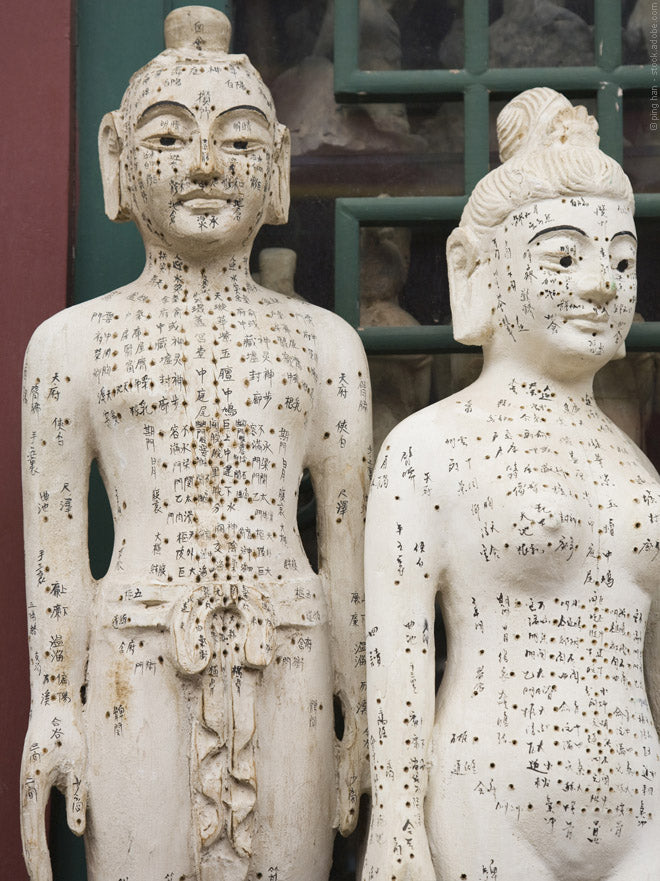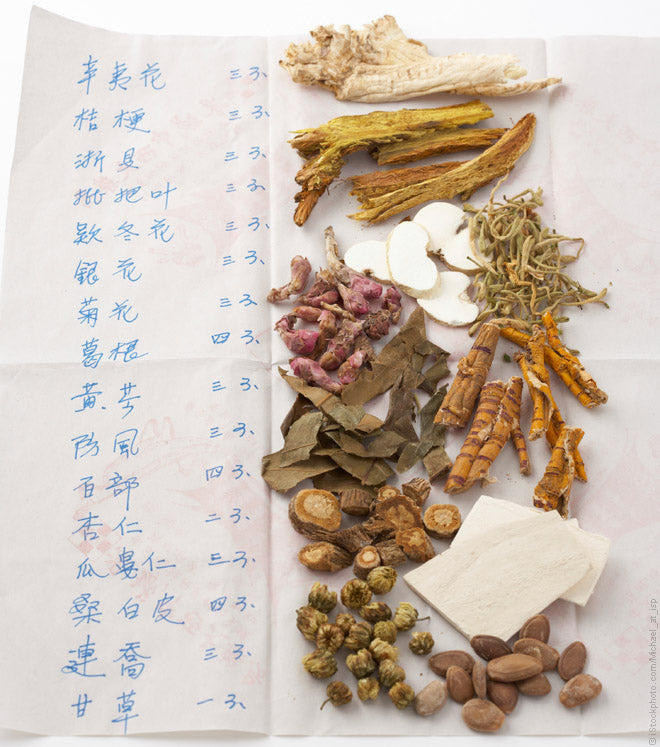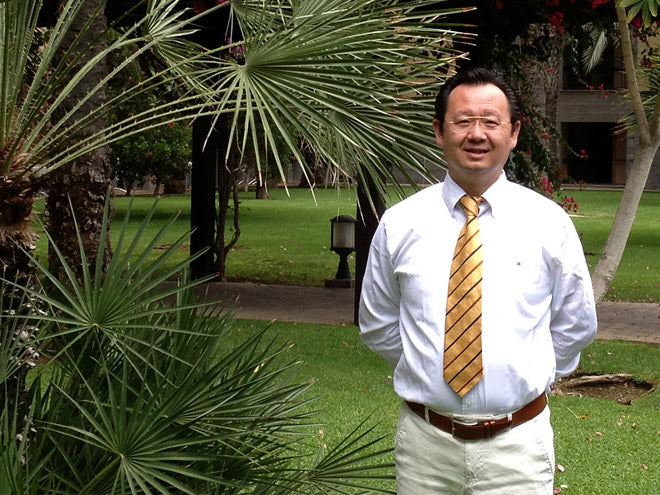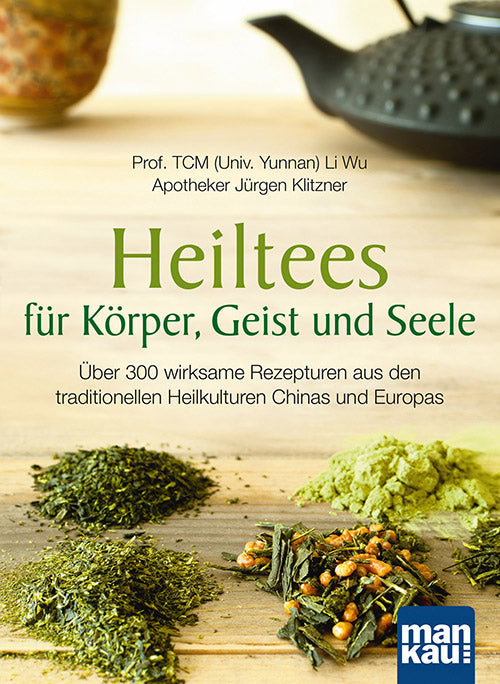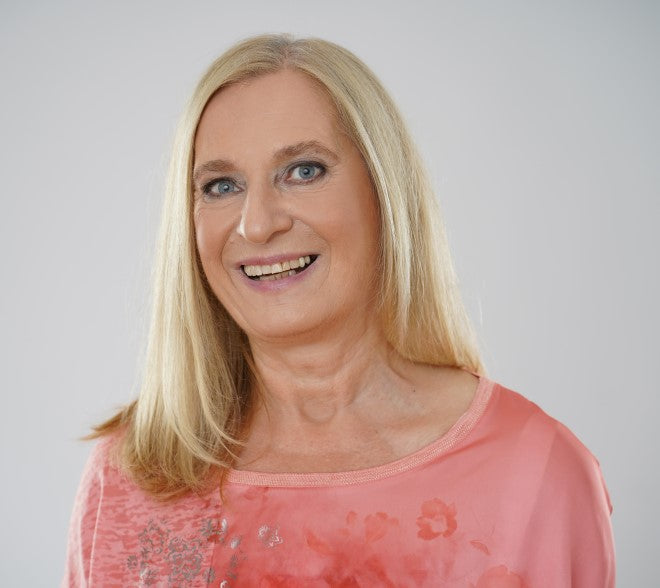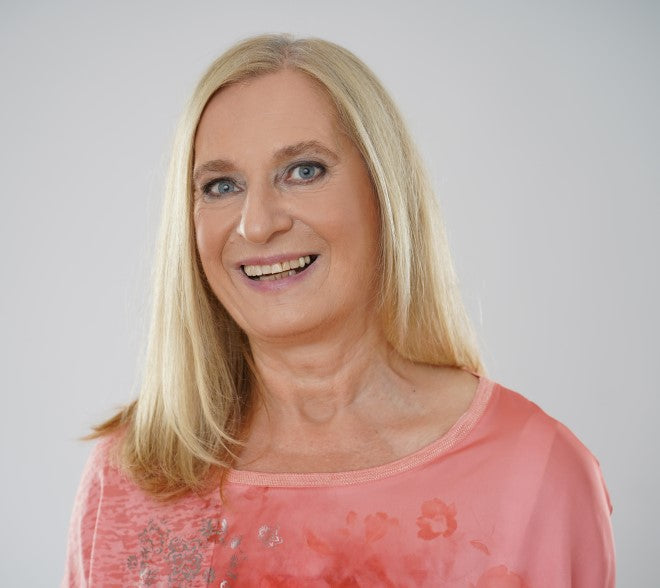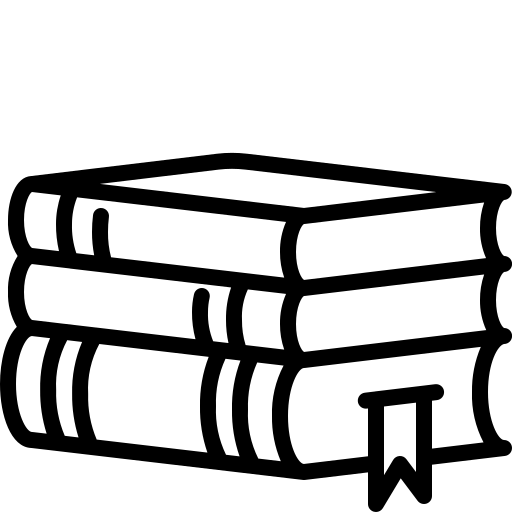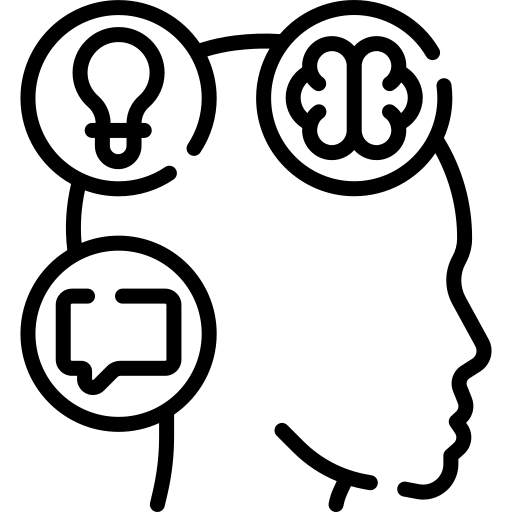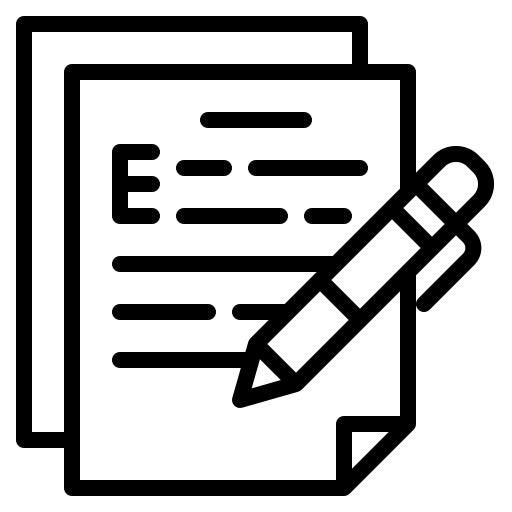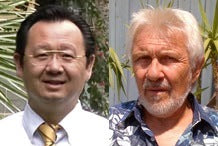
Interview with TCM doctor Li Wu and pharmacist Jürgen Klitzner about the book “Healing teas for body, mind and soul: “If you combine the healing traditions from East and West, valuable synergy effects arise”
Interview with TCM doctor Li Wu and pharmacist Jürgen Klitzner about the book “Healing teas for body, mind and soul: “If you combine the healing traditions from East and West, valuable synergy effects arise”
"The herbal medicine of traditional Chinese medicine has a tradition that goes back thousands of years, and European medicinal herb knowledge can also look back on a long and successful history. If you combine the two healing traditions, valuable synergy effects arise - the Chinese and European medicinal plants not only complement each other, but can also reinforce each other's effects." Prof. (TCM Univ. Yunnan) Li Wu and pharmacist Jürgen Klitzner have researched together for years and now present over three hundred valuable tea recipes made from European and Chinese herbs as well as mixtures of both herbal worlds in their book "Healing teas for body, mind and soul" .
China can look back on a tradition of medicine that goes back thousands of years. What role does traditional Chinese medicine (TCM) still play there today?
Li Wu: TCM has been around for around 4,000 years, it is an empirical medicine. There are five pillars in TCM, one of which is herbal medicine. Many of the findings of this doctrine date back to around 3000 BC, and others were developed by Sun Simiao (7th century) and Li Shizhen (16th century). On the one hand, our ancestors made a great effort to gather experience from the people. On the other hand, herbal medicine developed further in the imperial palace and through its medical "policy".
Traditional Chinese Medicine has been promoted by the government since 1949, i.e. since the post-war period. This preserves the tradition and is also very effective, practical and inexpensive. Today, most Chinese clinics have both a conventional medicine and a TCM department. It can be said that the cooperation and mutual complementarity of both disciplines is the golden path to the patient's health.
In Europe, too, there is a very ancient culture of herbal medicine that has never been completely replaced by conventional medicine. What do you think is the reason for the current boom in natural medicine?
J. Klitzner: The current interest of the population is not new - it can certainly be said that since the beginning of the 1980s there has been a visible shift towards natural healing methods. The reasons for this are complex: firstly, a gradual change in values became apparent - away from a stereotypical, purely functional, mechanistic way of thinking, towards a holistic view and treatment. People began to be interested in the reality of the natural process: in this, the living organism in humans and animals is not an "organic spare parts operation" - after all, all organs are inseparably connected in the cycle of life and cannot be divided. Secondly, conventional medicine was increasingly making negative headlines, as a result of which it was found that the public media was increasingly opening up to health topics. They began to report on naturopathy and naturopathic therapy successes, created new print periodicals that conveyed these experiences and reports, and thus reached an increasing readership. And in the area of self-help books, there is still an increasing number of new publications on natural healing methods. As the great French poet Victor Hugo (1802 - 1885) said over a hundred years ago: "Nothing is more powerful than an idea whose time has come."
Due to numerous parallels in the way TCM and holistic herbal medicine view human beings, a connection between the two traditions is obvious. What motivated you to undertake this joint project?
Li Wu: The focus here is on health and healing, using natural medicine. In both the East and the West, people have a need to use the healing power of nature, in keeping with the motto "close to nature". Chinese herbal medicine has systematically followed its millennia-old tradition. And European herbal medicine also has a long history. Although knowledge has been lost time and again in the various wars, the substance and essence are still very valuable.
In order to research and use the synergistic effects of both herbal worlds, I experimented and tried things out with Mr. Klitzner for many years. We can now finally present over three hundred tea recipes, including more than a hundred Euro-Asia recipes, in our book, to the best of our knowledge.
What are the fundamental differences between Chinese and European healing cultures? Are there any aspects that stand in the way of a “synergy between East and West”?
Li Wu: There are some differences between the two healing traditions. As I said, Chinese herbal medicine has been systematically tested and developed over thousands of years. The background is the theory of yin and yang and the five-element analysis as a basis.
European medicinal herbal knowledge comes largely from the people. Patient diagnosis is based on the relationship between man and nature.
Since both forms of medicine focus on nature, I think there are more similarities than differences. What is interesting is that the same herbs can have different effects depending on whether they grow in Europe or Asia. For example, hawthorn: if it grows in Europe, it is used for heart diseases. If it grows in Asia, it is used to strengthen digestion. Or licorice: if it grows in Europe, it is used as a remedy for the stomach lining; if it comes from Asia, it has a beneficial effect on the respiratory tract. The different effects are often related to the climate and soil substance.
When developing the recipes, you discovered that the effects of Chinese and European medicinal herbs not only complement each other, but can also reinforce each other. Can you explain this in more detail using concrete examples?
J. Klitzner: For thousands of years, large traditional healing cultures have used this principle of natural amplification, or in other words: "The whole is more than the sum of its parts." This ingenious ability of nature to achieve often astonishing results without additional effort works according to a physical principle known as "constructive interference." In 1975, Professor Fritz Albert Popp discovered that light waves - "bio-photons" - can be detected in every living cell. These are precisely the waves that traditional Chinese medicine sees as the life energy Qi that controls all life processes.
The desired synergy effects occur in a process that physicists call "phase": two waves come into phase when they both peak or trough at the same time, even at different frequencies and amplitudes. Coming into phase means synchronization. When two waves are in phase and overlap each other - this is the constructive interference mentioned above - then the combined amplitude of the two is greater than either one individually, with the result that the signal is amplified.
The therapist can often make use of this fact: for example, a feverish cold can be quickly improved with linden blossom and the simultaneous administration of Radix Isatidis – in Chinese “Ban Lan Gen”, or woad root.
Thanks to the success of alternative healing methods, the demand for natural remedies and medicinal herbs is very high. Where can you find enough effective medicinal plants in the modern world and which sources can you trust?
J. Klitzner: On this topic, it is clear that herb processing companies are now using natural resources very responsibly. Larger companies operate their own herb plantations, which are managed according to strict sustainability rules. Globally recognized experts work here to ensure that these laws are adhered to. In this respect, the overexploitation of wild medicinal herbs must be stopped - while at the same time ensuring the quality of the herbs used.
Preparation as a tea plays a special role in the effective use of medicinal plants. What is the "secret" of medicinal teas and how do Chinese and European tea cultures differ?
Li Wu: The way the teas or herbs are prepared has a decisive effect on their healing power. If you analyse the herbs individually, you will discover different chemical substances in the plants. Cooking different herbs means chemically mixing them with liquid at a certain temperature. This mixing produces an effective substance; people can absorb it better because it is not synthetically produced, but comes from plant tissue and is therefore much easier for the body to absorb.
“Tea-time” is very common in European tea and herbal culture and is considered to be beneficial to health and enjoyable. Chinese tea, on the other hand, is known for its healing powers, but its taste is sometimes described as “disgusting”. A well-known Chinese proverb says: “Good medicine tastes bitter.” Here you can see: The noble goal of Chinese herbal culture is healing.
For which complaints are medicinal teas best suited for treatment, and for which symptoms should one refrain from using this alternative method?
Li Wu: In general, medicinal teas have a good chance of curing chronic diseases. This applies not only to physical illnesses, but also to mental illnesses. However, in the case of acute illnesses, especially infectious diseases, the patient should consult their GP as soon as possible.
The third edition of your book has just been published, and has been expanded to include the two chapters "Medicinal teas for young people" and "Medicinal teas for the elderly". For which ailments are medicinal teas particularly suitable in these phases of life? And what overall conclusion do you draw after three editions of your joint guide?
J. Klitzner: The hormonal changes during puberty, i.e. between the ages of 13 and 17, can lead to various physical complaints and also psychological symptoms, such as irritability and aggression. The medicinal teas have a balancing and harmonizing effect here. It is similar in old age, when we have to cope with various changes - concentration and memory decline, metabolism becomes sluggish... Here too, various medicinal herbs have proven to be very effective in both Western and Chinese medicine.
Li Wu: We are both very happy that our book is now in its third edition and that we have been able to include even more helpful tea recipes. According to the feedback we have received since the first edition was published, readers are getting on well with our recommendations and the preparation of the medicinal teas. And you will notice that the ritual of making tea, handling the water and the medicinal herbs, has something healing about it.
Book tip:
Prof. TCM Univ. Yunnan Li Wu and pharmacist Jürgen Klitzner: Medicinal teas for body, mind and soul. Over 300 effective recipes from the traditional healing cultures of China and Europe. Mankau Verlag, 3rd updated and expanded edition 2020, €20.00 (D), paperback, 16 x 22 cm, 239 pp., ISBN-978-3-86374-089-4.
Link recommendations:
More about the book “Healing teas for body, mind and soul”
To the reading sample in PDF format
More about the author Prof. TCM Univ. Yunnan Li Wu
More about the author Jürgen Klitzner
To the reader forum with Li Wu
